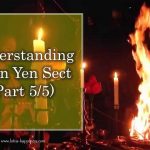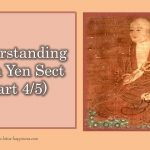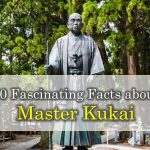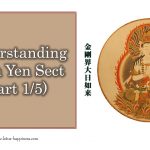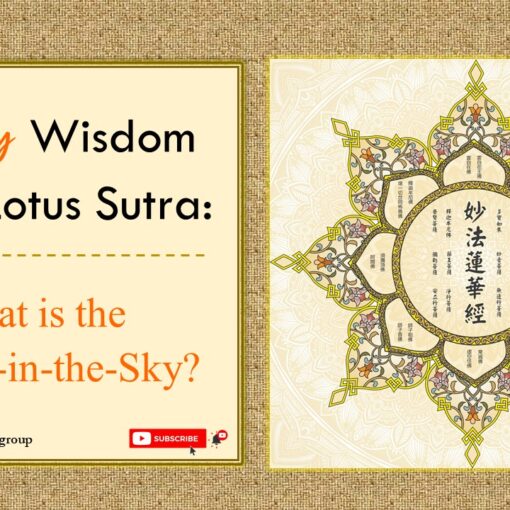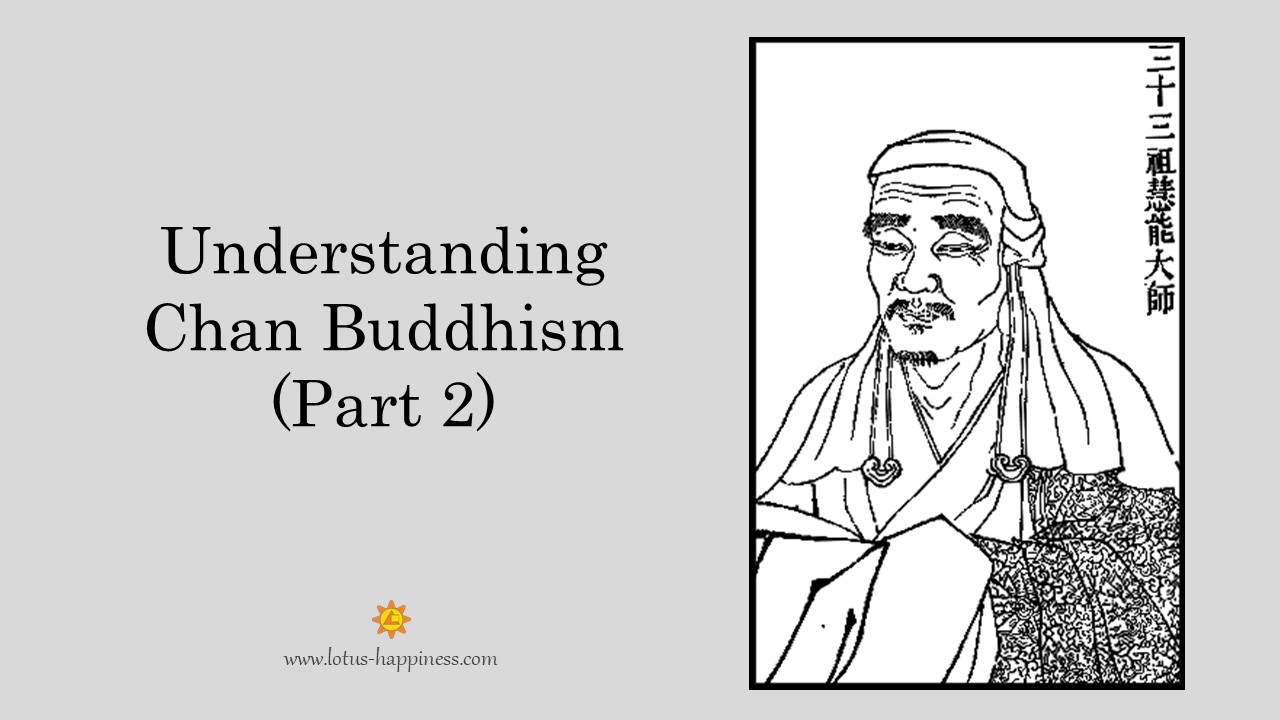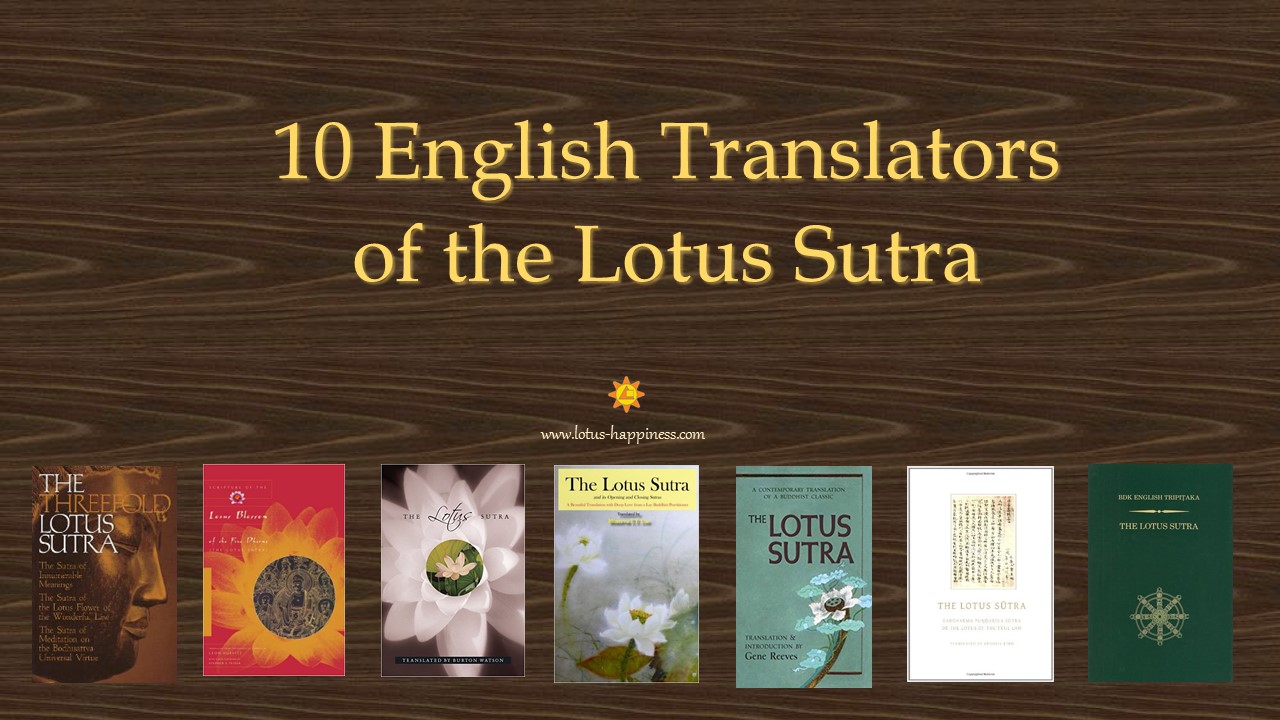Understanding Chen Yen Sect (Part 2/5)
The Three Wheels of Buddhism
The Buddha’s teachings are classified into three, known as the Three Wheels. The first wheel is Hinayana, which aims at personal liberation. The second is Mahayana, which extends Buddhist liberation to other people with universal compassion. The third wheel is Vajrayana, which offers the effective ways to attain enlightenment. Vajrayana is considered to be the final interpretation of the teachings of the Buddha, according to Tantric Buddhism.
Three Mysteries
According to Chen Yen sect, the body, speech and thought of the Buddha are the Three Mysteries, as ordinary practitioners are unable to see, to hear and to think of them. Thus, it is necessary to have some means of communion from the mystic power (Adhisthana in Sanskrit) of the Buddha, which can be expressed through the three activities of human beings, i.e. our body, speech and thought:
- Body – it refers to the Mudra — finger-intertwining
- Speech – it refers to the Mantra, or Dharani
- Thought – it refers to the Yoga concentration or Dhyana
Through the prescribed ritual, one can realize the perfect communion between the Buddha and the practitioner. As everybody possesses these three functions, all of which harbor secrets that lead to the attainment of Buddhahood.
It is important to note that the rituals connected with the Three Mysteries are transmitted orally from the Guru (teacher) to the disciple or practitioner.
Tantra
The word ‘Tantra’ has been discussed in the beginning of previous post.
Tantric practice involves three things:
- Reciting particular phrases and words, also known as Dharani [ªûù¥§], which are secret ‘codes’ of the respective Bodhisattvas and the Buddhas
- Acting out ritual activities, which have the effect of involving body and emotions in religion
- In conjunction with the first two things, the visualization of oneself as one of the Bodhisattvas or Buddha.
There are two keys features of Tantra:
- It seeks out the quick way to get insight, compared with years of patient meditation,
- It is generally performed only under the instruction of a Guru (teacher).
Mantra
The word Mantra comes from the Sanskrit roots, ‘manas’ and ‘tra’, which means ‘mind’ and ‘tool’ respectively. Mantras are invocations to Buddhas. Tantric practitioners repeat them in order to forge Karmic connections between themselves and meditative deities and to effect cognitive restructuring through internalizing the divine qualities that the Mantra represents.
The use of Mantra is essential in Tantric practice. According to its practitioners, Mantra repetition is not simply an external activity in which one vocalizes sounds, but an internal awakening of the cognitive potential of the practitioner. According to Lama Zopa Rinpoche, ‘ Mantras are effective because they help keep your mind quiet and peaceful, automatically integrating it into one-pointedness. They make your mind receptive to very subtle vibrations and thereby heighten your perception. Their recitation eradicates gross negativities and the true nature of things can then be reflected in your mind’s resulting in clarity. By practicing a transcendental Mantra, you can in fact purify all the defiled energy of your body, speech and mind.’
Mantras are tools of the mind. Tibetan Buddhism believes that the nature of the universe is expressed in sound, in Mantra. The Mantra is thus a powerful way to focus and attune mind or consciousness.
‘Om’ is the original Mantra. It is usually the first word of many Mantras in Buddhism. ‘Om’ symbolizes the wholeness of things, the infinite and perfect. Chanting a Mantra is a way to focus attention and direct oneself into union with enlightened consciousness. It is also believed that, by chanting the appropriate sounds and combinations of sounds, the corresponding meaning or experience is evoked. In Tantric theory, the universe is a function of Buddha. It begins with ‘Om’, and ends with ‘Hum’.
Chanting the Mantra is not based on reasoning, since rational concepts and logical thinking deviate from direct perception of the reality. Mantras provide an experience to listen to and develop inner vision, so the practitioner can hear the universe itself with direct awareness.
Mantra is a series of mystic syllables or formulae, which are said to be the epitome of the Sutras representing the ‘signals’ from the designated Buddha or Bodhisattva. It plays a dominant role in the practice of Tantrism, as reciting and upholding the Mantras is said to be the most direct and quickest way to attain enlightenment.
In the Buddhist Sutras, Dharani, and Parimitas are usually included in the texts. The former is short formulae to ‘uphold’ the Dharma, while the latter is short chants to protect’ it. Both of them are taken as Mantras, which are believed to be the ‘mental instruments’ to communicate the respective Buddhas or Bodhisattvas, as a tradition of Hinduism. Some people believe that Mantras can get rid of the effect of evil Karma.
Nevertheless, reciting and upholding the Mantras is said to be the most direct and quickest way to attain enlightenment, as it is an aid of visualizing the particular Buddha or Bodhisattva in the process. Mantra is seen as a ‘tuning fork’, which facilitates the practitioner to tune in his mind to a being he wishes to visualize. It is just a melody that can naturally tend to evoke reactions of sadness and happiness in people. Another analogy to explain the function of a Mantra is the key. It enables the practitioner to have psychic power to visualize and communicate with a being whose Mantra it is. Each Buddha or Bodhisattva has his own Mantra that signifies his essence.
The practitioner are not required to interpret the exact meaning of the Mantra, but just to recite and uphold it. Actually, some Mantras have no meaning at all. Most people believe that the accuracy in pronouncing the Mantra is directly proportional to the effectiveness of its power or response. However, some people think that sincerity is of utmost importance. Nevertheless, Mantras are usually properly trained in designated format in Tantrism.
Mantra : ‘Om Mani Padme Hum’
It is the most famous Mantra known as Six Syllables Great Radiant Mantra [¤»¦r¤j©ú©G], which translates as ” Hail to the Jewel of the Lotus”, is the root Mantra of Avalokitesvara, i.e. Guan Yin Bodhisattva, the patron Bodhisattva in Tibetan Buddhism. Each syllable has its own meaning, both literal and symbolic. By chanting this Mantra regularly, one can clear one’s mind and set consciousness on the path of enlightenment. Each of the six syllables has its own power of salvation. By reciting this Mantra wholeheartedly and singlemindedly, one can be reborn in Pure Land.
Mudras
Mudras are symbolic hand gestures, which are closely associated with Mantras. As Mantras consists of the secrets of sounds, Mudras consists of the secrets of touch. Each Buddha or Bodhisattva has his own Mudra. The practitioner is required to make the respective Mudra with his hands and fingers, so that he can get the ‘signals’ or ‘response’ from the corresponding Buddha or Bodhisattva more easily. There are different rites accompanied by different Mudras too.
The Mudra on a particular Buddha image signifies his characteristics. For instance, Aksobhya has the ‘earth-witness’ gesture, while Amitabha has his hand down to welcome beings to his Pure Land. Holding a fist expresses anger, and holding up an open palm expresses the wish to pacify any dispute. The basic function of a Mudra is to amplify the efficacy of the Mantras in evolving the psychic forces and higher states of consciousness.
Mandala
Literally, Mandala [°Ò¯ùù] means ‘circle’, both in the sense of a circular diagram and a surrounding retinue. According to the teaching of Cheng Yen sect, the true meaning of the esoteric teachings cannot be transmitted in words, but only through the diagrammatic Mandala.
There are two meanings of Mandala :
- The intrinsically existent Mandala, which is the multi-dimensional array or configuration of the qualities of enlightenment throughout time and space, inaccessible by ordinary beings.
- The simple symbolic Mandala , which may be visualized, painted or represented with objects. It serves to demonstrate the structure and the interaction of the various elements of enlightenment as embodied in the form of various Bodhisattvas and Buddhas.
The former represents a sacred realm, often the celestial place of a Buddha, which contains symbols and images that depict aspects of the characters and personalities of the Buddha, and indicate Buddhist themes and concepts. It is also the place where the consecration takes place.
The Dalai Lama explains that the image of the Mandala ‘is said to be extremely profound because meditation on it serves as an antidote, quickly eradicating the obstructions to liberation and the obstructions to omniscience as well as their latent predisposition’.
The latter one is a mystic circle, made of a piece of painted cloth or paper, showing the Buddha or Bodhisattva in their cosmic connection. Its basic function is to outline the Pure Land of a specific Buddha or Bodhisattva with the associated sages.


